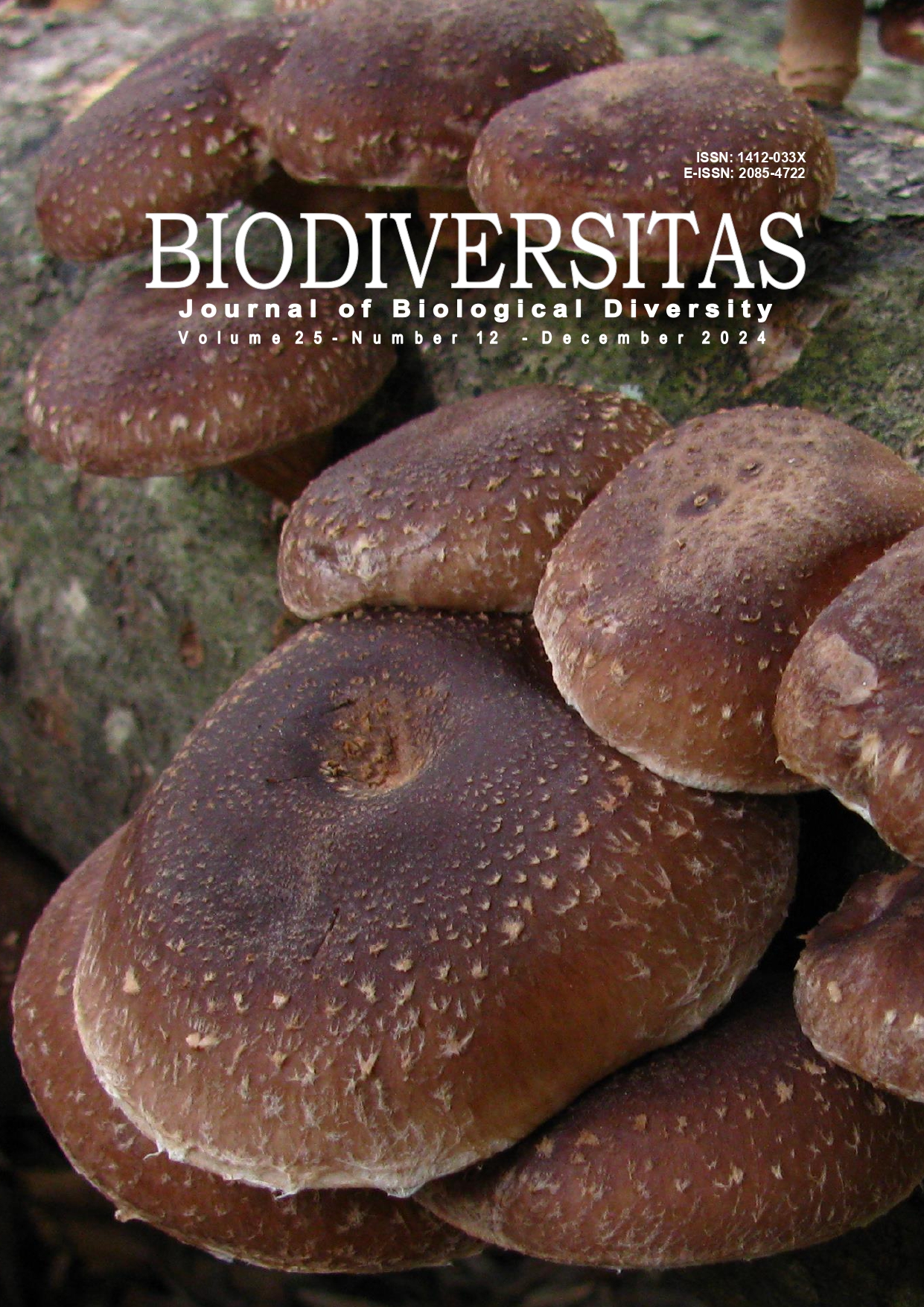Using morphometric characters to estimate leaf productivity of seagrass Halophila major
##plugins.themes.bootstrap3.article.main##
Abstract
Abstract. Darus RF, Bengen DG, Zamani NP, Ismet MS. 2024. Using morphometric characters to estimate leaf productivity of seagrass Halophila major. Biodiversitas 25: 4994-5004. Halophila major is a seagrass species with new records in Indonesia. This species was described based on morphometric characteristics and DNA sequencing. In this study, we expand our understanding about this species by looking at its leaf productivity. This study aims to determine the productivity of H. major leaves collected across various locations of Indonesian waters and analyses its relationship with morphometric characters. Morphometric characters (Leaf Length-LL, Leaf Width-LW, and Leaf Area-LA) were used to see the correlation with leaf productivity parameters, namely Leaf Dry Weight (LDW), Specific Leaf Area (SLA), Biomass (BIO), and Carbon Concentration (CS) estimated using allometric methods. The result of this study indicates that the biomass of H. major is greater than H. ovalis, its closest relative. LL and LW were more strongly correlated with LDW compared to LA. Biomass was also greatly influenced by LL and LDW. Leaf productivity variation is affected by the leaf size, suggesting that leaf productivity can be used to distinguish seagrass species under the similar genus. This study showed that allometric equations can be used quickly to assess the biomass of small seagrasses. However, more data is needed for knowing and interpreting a character in new seagrass species. Hence, this study must be replicated for other seagrass species.

